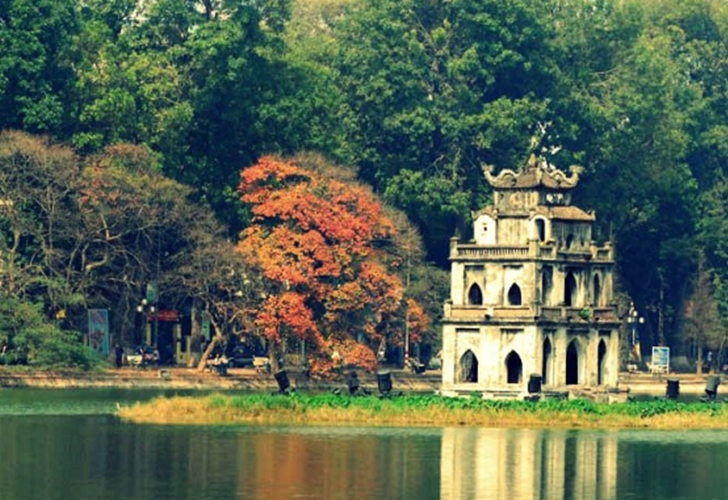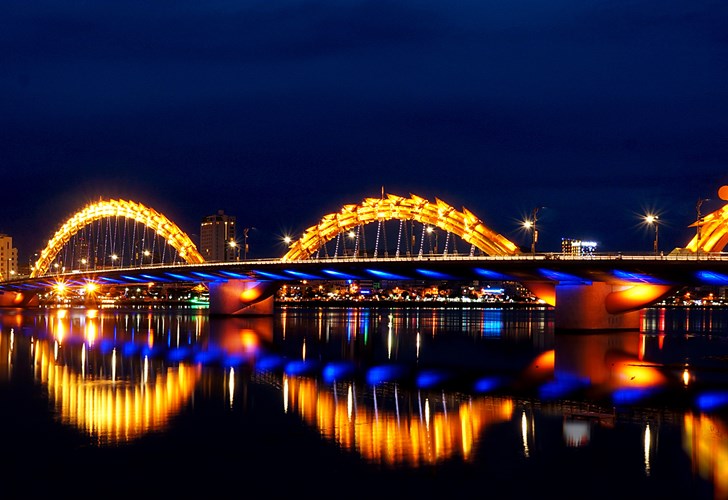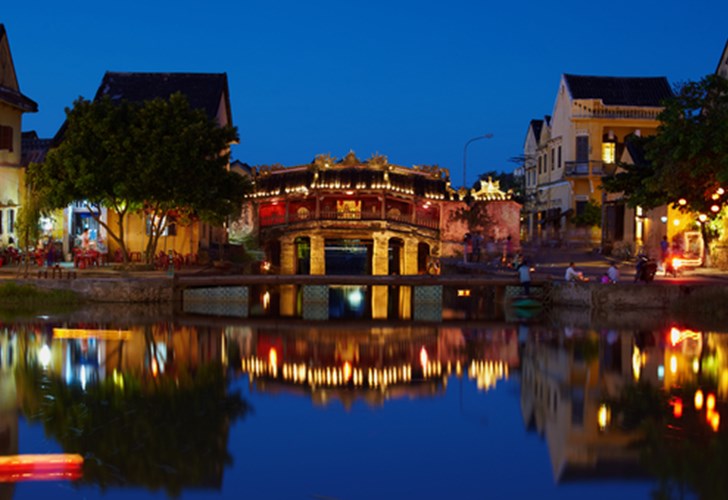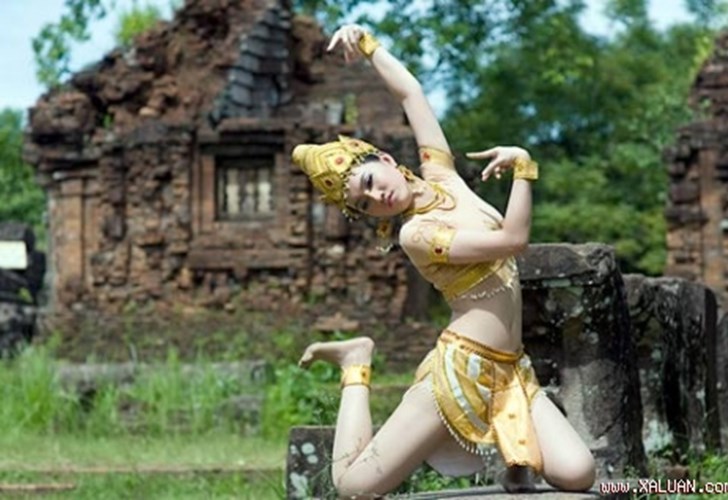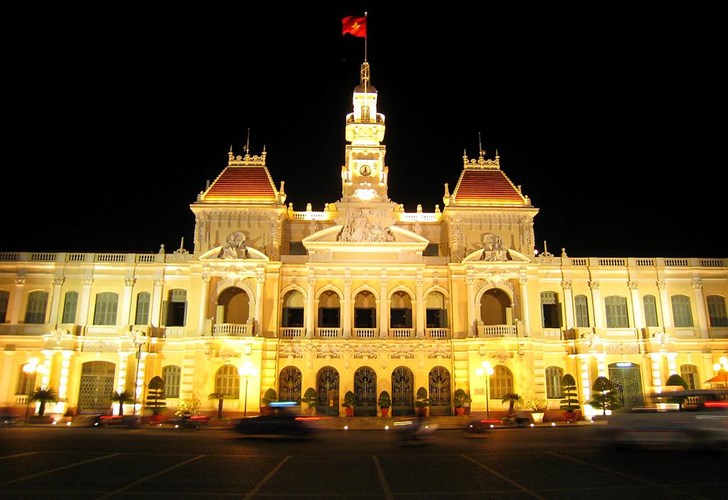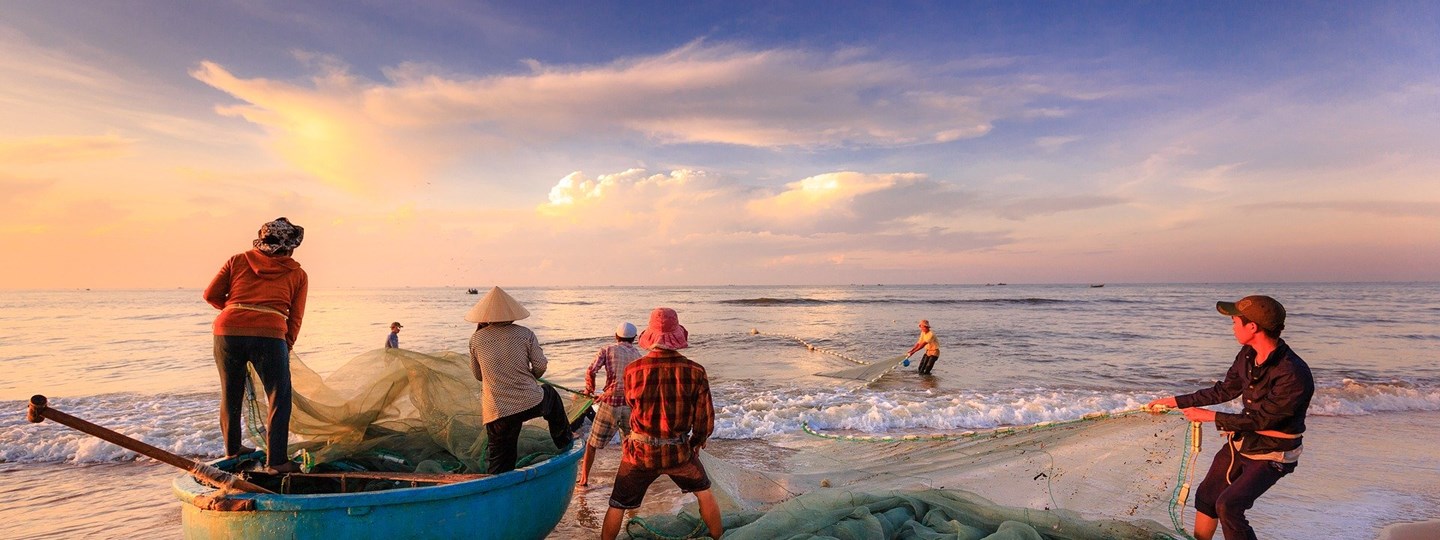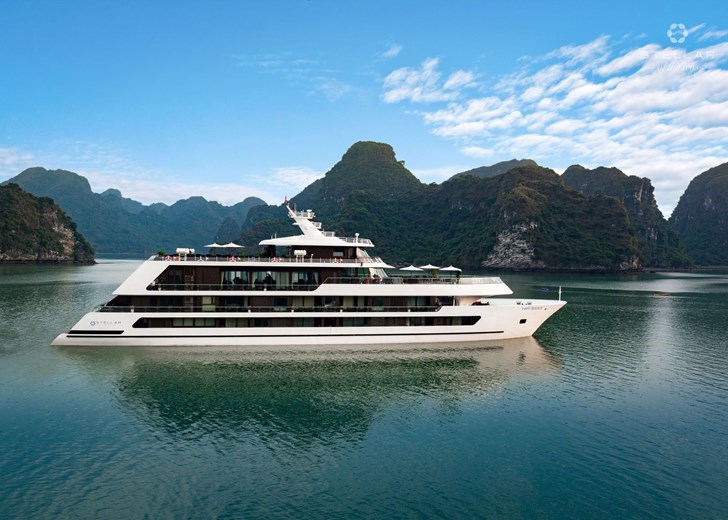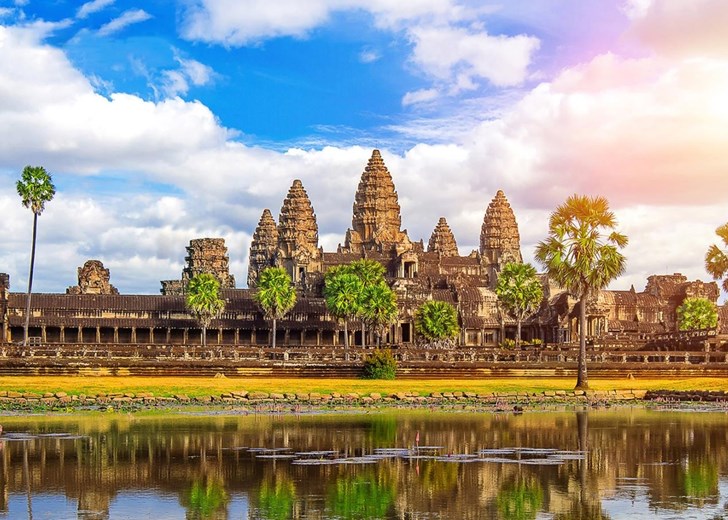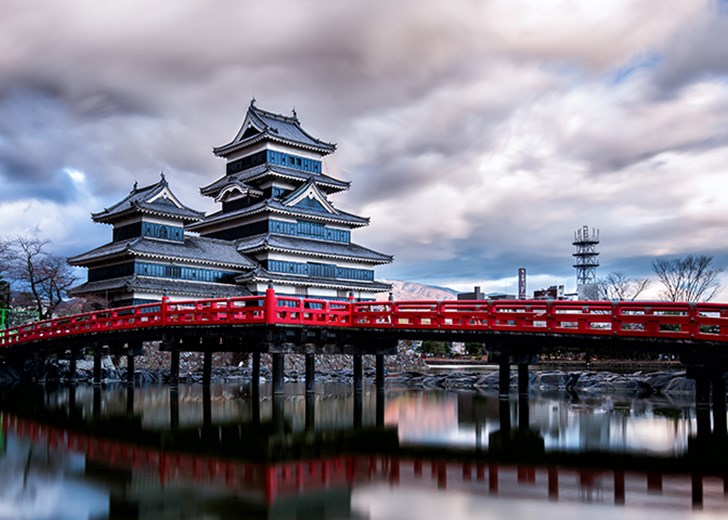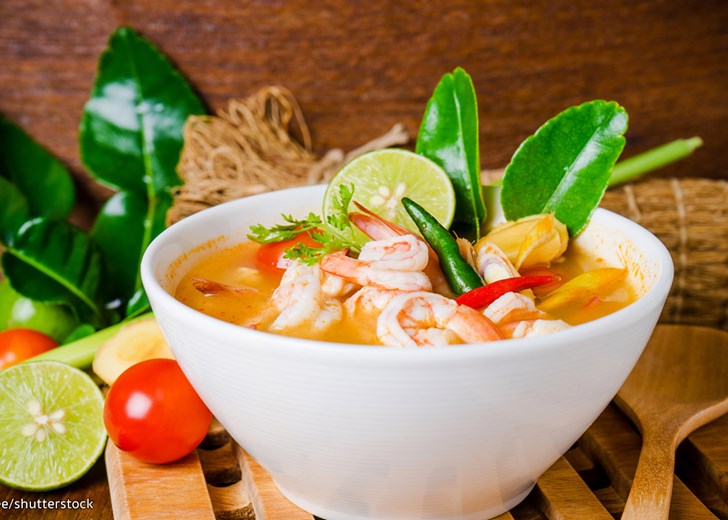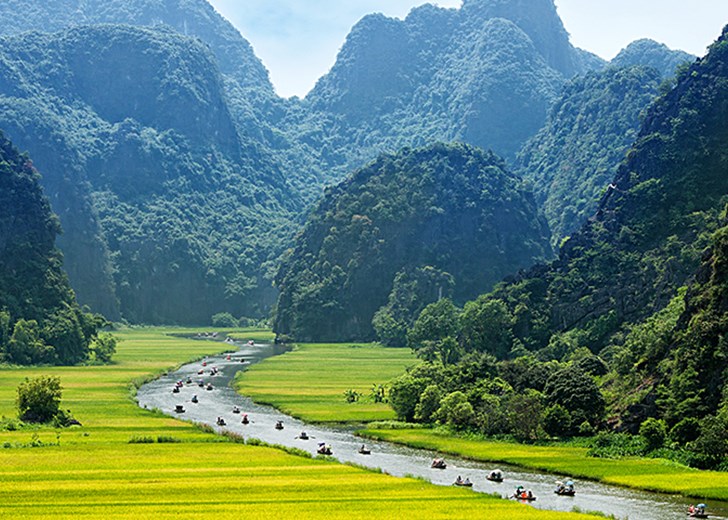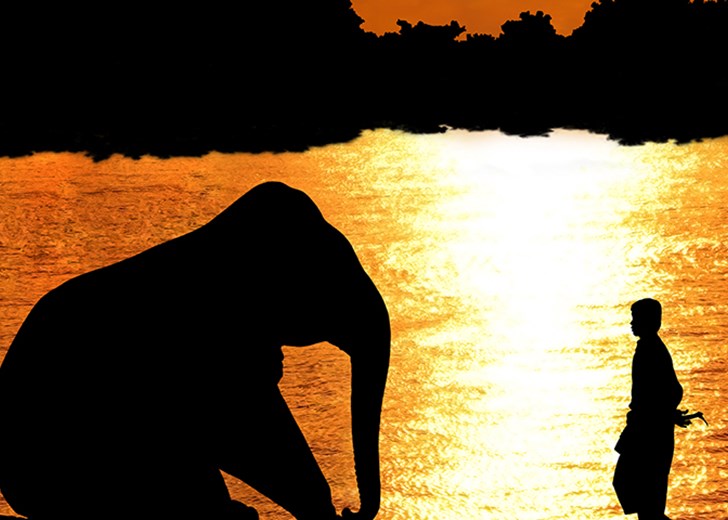| Day 1 : |
HANOI ARRIVAL - SAPA (L/D)
Arrive Hanoi international airport, our representative will meet you and transfer you to Sapa via highway Noi Bai – Lao Cai, length 245km, will take around 5 hours. You will have the opportunity to enjoy beautiful scenery of the region, while the road. Stop at Lao Cai province for lunch and continue transfer to Sapa.
Visit Silver Waterfall, far about 12 km from Sapa town center. From the distance, you can witness a spectacular scenery, the waterfall looks like a white dragon looking down from the sky. Transfer back to Sapa town and visit Stone Church, was built in 1895 by the French. The church is the only ancient architectural work of the French, in Sapa, that remains entirely intact. It has become an interesting symbol of this lovely mountainous town. Check in hotel and enjoy the dinner at local restaurant. Evening at leisure for visit Sapa town. Overnight in Sapa.
|
| Day 2: |
LAO CHAI – TA VAN – TA PHIN VILLAGE (B/L)
From Sapa, transfer to the village of Lao Chai, where the trek begins. Visit the Hmong, Dzay and Dzao people, while enjoying spectacular scenery of terraced rice paddies, waterfalls and the small bamboo forests that are unique to the northern region. After Lao Chai we walk to Ta Van village of Giay people. It is a small group of ethnic people in Vietnam with a rich culture and beautiful houses located on rice paddy fields. Transfer back to Sapa for lunch
In the afternoon, excursion to Matra and Ta Phin with soft trek. The walk starts from Sapa and follows a trail through spectacular scenery of beautiful countryside, lush pine forests and paddy fields. Stroll through Matra, a hidden Black Hmong ethnic minority village that seems far from civilisation. In Ta Phin village see the Black Hmong and Red Dao minorities, two large ethnic groups recognisable by their distinctive dress and handicrafts. Visit a small school, local houses and some nearby caves. Return to Sapa by vehicle. Have a dinner on your own expenses. Overnight in Sapa
|
| Day 3: |
SAPA - HANOI (B/L/D)
Morning at leisure for your own exploring. Check out hotel and have lunch at Lao Cai province before transfer back to Hanoi. Arrive in Hanoi, see a Water Puppet Show, a fantastic art form originating in northern Vietnam, best seen in Hanoi in late afternoon. Puppetry Art is being continuously enriched by the cultural and spiritual life of the Vietnamese people. Set outside, the audience will have an opportunity to witness an artistic genre in which land, water, wind, fire and smoke are combined to create a perfect harmony between art, nature and gastronomy. Enjoy the dinner at local restaurant and check in hotel. Overnight in Hanoi.
|
| Day 4: |
HANOI CITY TOUR (B/L)
Experience every ups and downs of the historical flow, Hanoi is proud to be the capital of thousands of years of civilization of Vietnam with the traditional and elite converging. Although it is the modern-day capital of Vietnam, Hanoi still retains the mystery and charm of past centuries. Narrow lanes and traditional shop houses invite an exciting exploration by walking, while it's many beautiful public spaces; lakes, parks, tree-lined boulevards and monuments; give the city an air of elegance and harmony with nature unique among Asian capitals.
Begin at the Ho Chi Minh Mausoleum, where visitors can pay respects to the embalmed body of Ho Chi Minh [# closed in the afternoons, on Mon and Fri, and closes annually in October and November for restoration]. Continue to the Presidential Palace (maybe viewed from the outside only). Stroll through the park to the Ho Chi Minh Stilt House, the simple two-room dwelling where Ho Chi Minh lived from 1958 until his final days. Preserved in the same condition as during his life, it may be viewed through the windows. Continue to the miniature One Pillar Pagoda, built of wood on a single stone pillar, the pagoda is designed to resemble a lotus blossom, the symbol of purity, rising out of a sea of sorrow.
Visit the Temple of Literature, this place has a peaceful series of walled courtyards and graceful gateways, and this monument is extremely well preserved and is a superb example of traditional-style Vietnamese architecture. Founded in 1070 and dedicated to Confucius, this was also the site of Vietnam's first university. In one courtyard, giant stone tortoises bear stele on their backs, listing the accomplishments of graduating scholars.
After lunch, visit the Museum of Ethnology [# Available on: Sun, Tue, Wed, Thu, Fri, Sat], with art and artefacts from the 54 different ethnic groups that inhabit the country. Inside the museum are detailed descriptions of minority groups, with examples of their traditional clothing and way of life. An open-air exhibition in the museum’s spacious and peaceful ground features ethnic houses, cemeteries and other distinctive ethnic buildings from all over Vietnam.
Visit Hoan Kiem Lake, Ngoc Son Temple and the Rising Sun bridge. Hoan Kiem Lake, is a lake in the historical centre of the Hanoi capital. It is one of the major scenic spots in the city and serves as a focal point for its public life. Legend claims that, in the mid-15th century, heaven sent Emperor Ly Thai To a magical sword, which he used to drive the Chinese from Vietnam. After the war a giant golden turtle grabbed the sword and disappeared into the depths of this lake to restore the sword to its divine owners. The Tortoise Tower (Thap Rua) standing on a small island near the centre of the lake is linked to the legend.
The Ngoc Son Temple was erected in the 18th century. It honours the 13th -century military leader Tran Hung Dao who distinguished himself in the fight against the Yuan - Mongol invaders, Van Xuong, a scholar and Nguyen Van Sieu, a Confucian master and famous writer in charge of repairs made to the temple in 1864. Jade Island is connected to the shore by the wooden red-painted Huc Bridge (The Huc, means Morning Sunlight Bridge).
Taking a cyclo in the Old Quarter with a visit to the Old House at 87 Ma May. The Old Quarter carries profound imprints of the past. Take a leisurely stroll along crisscrossing narrow lanes, crowded with small houses and local shops, brimming with the daily activities of the local populace. Stop and visit an old house at 87 Ma May Street, a great example of traditional living space, where the essence of historical Hanoi is well preserved. Overnight in Hanoi.
|
| Day 5: |
NINH BINH (B/L)
In the morning, transfer from Hanoi to Ninh Binh (104 km, 2 hours). Journey just outside town to Tam Coc, or Dry Halong bay. This area is famous for its breathtaking scenery, where dramatic limestone formations rise sharply out of green rice paddies and wetlands. Embark on a small, hand rowed sampan, and begin your journey along green waterways. The name Tam Coc means "three caves" and you will pass under a sequence of three caves - Hang Ca, Hang Giua and Hang Coi - as your boat glides past green rice fields and lotus ponds. Those who love to explore real countryside images of Vietnam can proceed a cycling ride from Tam Coc to Bich Dong Pagoda (estimated time 40 minutes for 5km cycling 2 ways). You will be amazed at beautiful scenery of lust paddy fields. Stop at nearby Bich Dong Pagoda, built on Ngu Nhac Mountain. On the mountain peak stands the statue of a scholar Mandarin looking at the horizon in hope of viewing the spectacular landscapes of Hoa Lu. From the upper pagoda, one has the most magnificent view of Bich Dong, which is romantically charming in terms of architecture and history. Continue going toward the giant cathedral at Phat Diem before returning in Ninh Binh. By vehicle from Ninh Binh to Hanoi. Overnight in Hanoi.
|
| Day 6: |
HANOI – HALONG BAY (B/L/D)
After breakfast, check out hotel and by vehicle from Hanoi to Halong Bay. Arrive Tuan Chau Marina Port at noon, embark cruise.
Cruise aboard through Halong Bay, Day 1 of 2. Savor a fresh seafood lunch while cruise is passing some beautiful spots like Burn of Incense, Dog, Fighting Cock Island. Discover Surprise Cave (Sung Sot), one of the biggest caves in Halong Bay with beautiful stalactites and stalagmite. Continue to Titop Island for swimming on the beach and climbing up to the top of the island. Summit on the sundeck for watching the sunset. Seafood set dinner onboard. Enjoy film or squid fishing program. Overnight in cabin/ on board.
|
| Day 7: |
HALONG BAY - HUE (B/L/D)
Cruise aboard through Halong Bay, Day 2 of 2. For the early risers, join a Tai Chi lesson on sundeck and enjoy s breakfast. Explore Luon Cave by rowing boat. Return to cruise to join the short class of Cooking demonstration, how to make spring rolls before an early lunch is served. Cruising back to habour and enjoy the beautiful landscape of Bai Tu Long Bay, passing Man Head Island and Turtle Island. Check out the cabin.
By vehicle from Halong to Noi Bai airport for the flight to Hue. Arrive in Hue, our representative will meet you and transfer you to local restaurant for dinner and then, check in hotel. Overnight in Hue.
|
| Day 8: |
HUE CITY TOUR (B/L)
Hue served as the capital of Vietnam for more than 140 years. It houses ancient temples, imperial buildings and French-style edifices. It was established in the 17th century, Hue owes its charm partly to its location on the Perfume River – picturesque on a clear day, atmospheric even in less flattering weather
Visit the Old Imperial City. Located in the heart of Hue is the Imperial Citadel, a vast complex built in the early 19th century and modelled after the Forbidden City of Peking. The original walls stretched for 10 km and were surrounded by a wide moat. Today, most of the buildings have been destroyed due to bombing during the Vietnam-American War, but the monuments that remain provide a fascinating glimpse into the court life of the Nguyen Dynasty. Approach the city past the striking Flag Tower, where a giant Vietnamese flag waves proudly overhead, to the imposing Ngo Mon Gate, the main entrance to the Imperial Enclosure. Enter into an area of spacious courtyards and serene lotus ponds, and visit Dien Tho Residence (Dien Tho palace) where the Queen mother lived, visit Thai Hoa Palace, the magnificently decorated reception hall, the Halls of the Mandarins, and the original Nine Dynastic Urns, among other sites, including a visit to the Hue Royal Antiquities Museum...
Excursion to Thien Mu Pagoda with a boat trip on the Perfume river. Embark on a local boat and cruise down the Pefume River to the iconic Thien Mu Pagoda, an elegant seven-tiered octagonal tower which has become Hue's most widely recognizable monuments. During the early 1960s, this became a centre of anti-government protests, and the site of the famous self-immolation by the monk Thich Quang Duc. Have lunch at local restaurant.
Visit the Imperial Tombs Khai Dinh. The last of the monumental tombs of the Nguyen dynasty, completed in 1931, this tomb incorporates distinct European elements into traditional Vietnamese architecture.
Visit An Hien Garden house - the type of ancient houses often encountered in the ancient capital of Hue. It's symbolizing the uniqueness of typical architecture at that time. Architecture and nature harmoniously blending together has brought An Hien Garden House to become the appealing attraction in Hue. Undergoing over a century of existence, the garden has remained almost intact landscapes and architectural features. Overnight in Hue.
|
| Day 9: |
HUE - HOIAN (B/L/D)
By vehicle from Hue to Hoi An (140 km, 3.5 hours). Drive south from Hue along scenic mountain roads with spectacular views over the coastline. Highlights along the way include the dramatic Hai Van Pass, the high dividing line between the climate zones of North and South Vietnam; Lang Co, a lovely stretch of beach curving outwards between a clear blue lagoon and the East Vietnam Sea; and the large coastal city of Danang.
Visit Marble Mountain. The Marble Mountains consist of 5 stone hillocks, once islands, made of marble. All of the mountains have cave entrances and numerous tunnels. Each is said to represent one of the five elements of the universe. The largest and most famous, Thuy Son, has a number of natural caves in which Buddhist sanctuaries have been built over the centuries. When the Champas ruled this area, these same caves were used as Hindu shrines.
Walking tour around Hoian. Hoi An is a picturesque riverside town south of Danang. Known as Faifo to early western traders, it was one of South East Asia's major international ports during the 17th, 18th and 19th centuries. Now, this beautifully preserved historic city is best seen on foot. See the iconic Japanese Covered Bridge - the first bridge on this site was constructed in 1593 by the Japanese community of Hoi An to link the town with the Chinese quarters across the stream. The bridge was provided with a roof so it could be used as a shelter from rain and sun. Visit the nearby Sa Huynh Museum, which contains exhibitions from the earliest period of Hoi An's history.
Stroll to the Tran Family Chapel, a house for worshipping ancestors that was built about 200 years ago with donations from family members. The Tran family traces its origins to China and moved to Vietnam around 1700. The architecture of the building reflects the influence of Chinese and Japanese styles. Visit the Phuoc Kien Assembly Hall, a Chinese pagoda built around 1690 and then restored and enlarged in 1900. It is typical of the Chinese clans that were established in the Hoi An area. The temple is dedicated to Thien Hau Thanh Mau (Goddess of the Sea and Protector of Sailors and Fishermen). Finally, visit a Lantern making workshop, one of many in Hoi An. The framework for the lanterns is made beforehand and clients can observe locals adorning silk cloth on the lantern.
Enjoy the dinner at local restaurant with special cuisine and check in hotel. Overnight in Hoian.
|
| Day 10: |
MY SON HOLY LAND (B/L)
Journey to My Son, the former religious centre of the Champa Kingdom, a sophisticated civilization which held sway over the region from the 4th to the 13th centuries. This is graphically illustrated by the remains of a series of impressive tower-temples located in a dramatic site that was the religious and political capital of the Champa Kingdom for most of its existence. Today, all that is left are five archaeological sites from different periods, in a beautifully green setting of hills and winding streams. On the way to Hoi An, board a local boat and cruise down the Thu Bon River, enjoying the unspoiled countryside and stop at a local restaurant which is located on the bank of a river.
Afternoon at leisure for your own exploring and relaxing. Overnight in Hoian.
|
| Day 11: |
HOIAN – CAN THO (B/L)
Transfer to Danang airport and take a flight to Can Tho. The epicentre of the Mekong Delta, Can Tho is the largest city in the region and feels like a metropolis after a few days exploring the backwaters. As the political, economic, cultural and transportation centre of the Mekong Delta, it’s a buzzing town with a lively waterfront lined with sculpted gardens, an appealing blend of narrow backstreets and wide boulevards. It is also the perfect base for nearby floating markets, the major draw for tourists who come here to boat along the many canals and rivers leading out of town.
Visit Binh Thuy ancient house Can Tho, has long been renowned for its ancient beauty along with its unique architecture. Antiques and prominent traditional cultural features have been still deliberately preserved and promoted by descendants of the founder. The house seems to be much brilliant in the sunlight with its sophisticated French architecture. Unique architectural in the harmonious combination between East and West has taken Binh Thuy ancient house to become one of the must-see tourist attractions in Can Tho.
Visit a fruit garden in Can Tho. You will be relaxed in the fruit-gardens and enjoy the specialties of Mekong delta region. Stay away from the bustling of the city to come to fruit garden. It is a place with the idyllic beauty of luxuriant fruit gardens that everyone must be passionate about. Breathe in the fresh air and sit and relax under the lush green trees and enjoy the landscapes that will give you an unforgettable experience. Overnight in Can Tho.
|
| Day 12: |
FLOATING MARKET – CHAU DOC (B/L)
Excursion by boat to Cai Rang Floating Market (Tour will start early morning). In the early morning, set out by boat to explore Cai Rang Floating Market, the biggest and most bustling of the Mekong Delta markets, which attracts fruit and vegetable vendors from all over the region. Buyers on smaller boats weave between the large barges selling wholesale produce. Each vendor advertises fresh samples of their wares on long poles that tower overhead above the colorful boats. By boat through the market, watching people haggle and trade, and possibly sample some of the fruit. By 9 am, the activity has died down and it is time to return to the pier after exploring some of the backwaters and canals. By vehicle from Can Tho to Chau Doc (120 km, 3 hours).
Sightseeing in Chau Doc with boat trip. Embark by boat to explore the bustling river life around Chau Doc; visit the Floating Villages, whose inhabitants live and work all their lives on the river. Stop at one of the typical houses, and see how they raise fish in nets directly under the house itself. Continue to the distinctive Cham Village, on the other side of the river, with its thriving Muslim community. After returning to the town, continue by vehicle to visit Lady Chua Xu Pagoda at the base of Sam Mountain, which rises sharply from the surrounding rice paddies. Walk around the base of Sam Mountain before return to Chau Doc by vehicle.
Visit Tay An Pagoda. The Tay An Pagoda has a complex of architectural structures built within the premises of the pagoda which work in harmony with its natural surroundings. The present construction is a blend of Oriental and Indian styles. The pagoda houses 200 statues made of precious wood. Overnight in Chau Doc.
|
| Day 13: |
CHAU DOC – SAIGON (B/L)
By vehicle from Chau Doc to Saigon (250 km, 5 hours). Check in hotel and relax. Overnight in Saigon.
|
| Day 14: |
CU CHI TUNNEL – SAIGON CITY TOUR (B/L)
Excursion to Cu Chi Tunnels (60km, 1.5 hours) . Never discovered by American forces, the Cu Chi Tunnels were an important Vietcong base during the American War. Stretching over 200 km, this incredible underground network, dug by hand out of hard laterite, connected command posts, hospitals, shelter and weapons factories. Today, walk through the area and learn about the day to day life of the Vietcong, bear witness to the cleverly disguised entrances and elaborate booby-traps, and even venture inside the tunnels, some of which have been modified to accommodate tourists. Have lunch at a restaurant which is located on the bank of a river. Return to Ho Chi Minh city and then have a half day city tour of dynamic city - called Saigon by many locals. Everywhere you look, you see the convergence of traditional and modern life.
Visit the Reunification Palace, formerly the Independence Palace of the South Vietnamese president, this 60s style building was famously stormed by tanks on April 30, 1975 signifying the fall of South Vietnam.
Sightseeing in Cholon (Chinatown). A vibrant metropolis, Saigon teems with energy, activity and motion. Everywhere there is a meeting of traditional and modern life. The emerging modern skyline stands side by side with colonial buildings and traditional temples. Outside on the streets, young professionals zip by on motorbikes, chatting on cell phones; while inside the quiet temple courtyards, worshippers pray amidst clouds of incense.
Visit Thien Hau Pagoda. Thien Hau Pagoda was built by the Cantonese congregation in the early 19th century. The pagoda is one of the most active in Cholon and is dedicated to Thien Hau. It is said that she can travel over the oceans on a mat and ride the clouds to wherever she pleases. Overnight in Saigon.
|
| Day 15: |
SAIGON DEPARTURE (B)
Your leisure time until your departure flight, transfer to Tan Son Nhat airport. End program.
|


